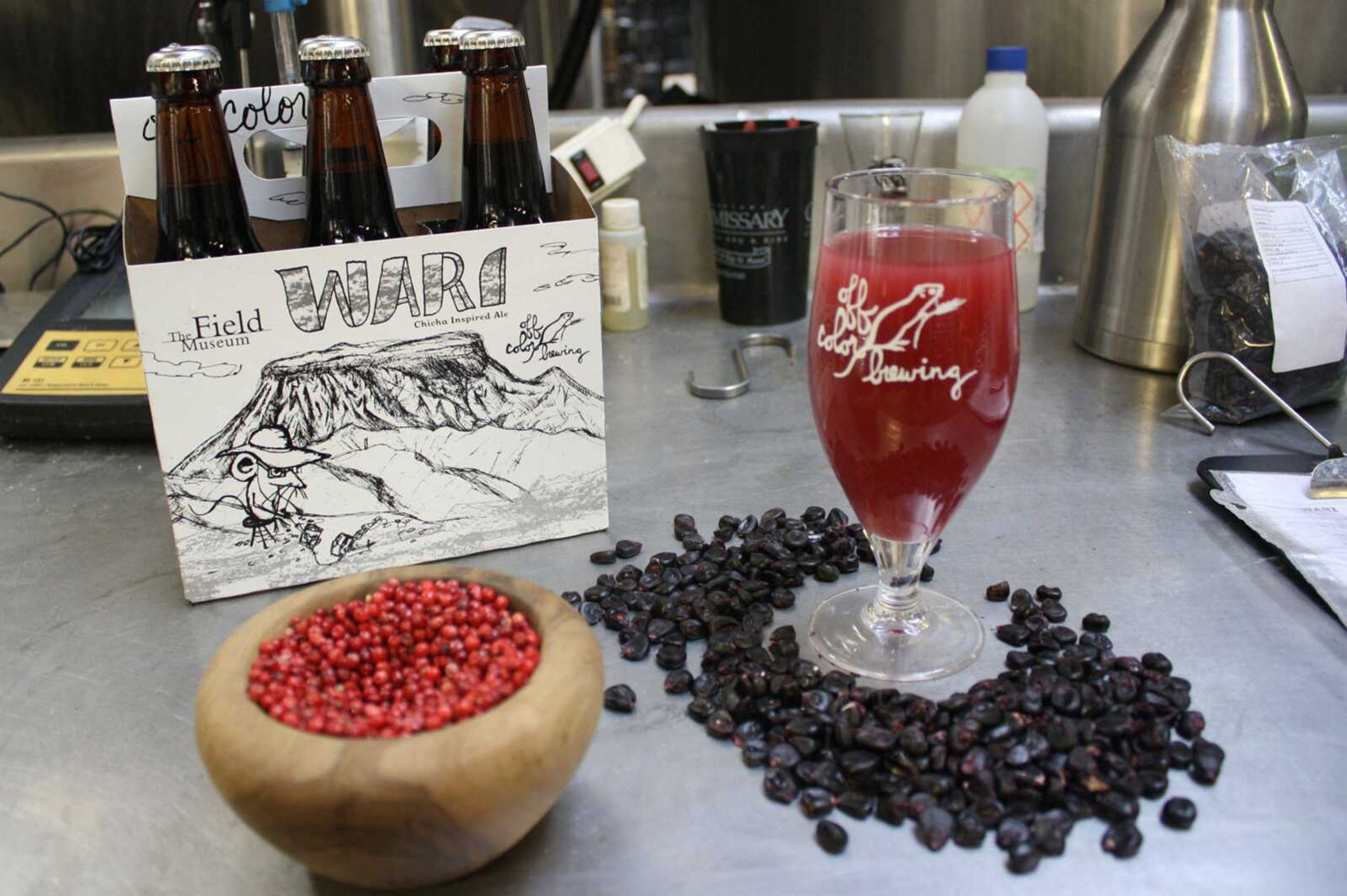Museum's Wari Ale the latest homage to ancient brews
SIOUX FALLS, S.D. -- Fourteen years ago, University of South Dakota anthropology professor Matthew Sayre unearthed pepper tree seed from the southern tip of Peru, unaware he'd stumbled upon a spent ingredient from a small 1,000-year-old brewery. That discovery evolved into a team from Chicago's Field Museum team excavating a larger 500-gallon batch operation at Cerro Baul and the issuance of an ale inspired by the ingredients and brewing practices of the ancient Wari people...
SIOUX FALLS, S.D. -- Fourteen years ago, University of South Dakota anthropology professor Matthew Sayre unearthed pepper tree seed from the southern tip of Peru, unaware he'd stumbled upon a spent ingredient from a small 1,000-year-old brewery.
That discovery evolved into a team from Chicago's Field Museum team excavating a larger 500-gallon batch operation at Cerro Baul and the issuance of an ale inspired by the ingredients and brewing practices of the ancient Wari people.
In the recent craft-beer booms, brewers have turned to ancient civilizations' obscure, millennia-old recipes using corn, rice, peppers and berries to set themselves apart from their colleagues' beers as well as the vast majority of modern beer, which is brewed primarily with barley, hops and yeast.
"They started spreading out and trying other things, and it turned out that ancient people were doing the same thing," said Patrick McGovern, an ancient beverage expert at the University of Pennsylvania Museum in Philadelphia. "It takes us back to our roots."
Wari Ale, the latest offering that taps ancient cultures for inspiration, carries the sourness of a corn mash with a late-breaking, delicate hint of sweetness from the pepper, said Patrick Ryan Williams, the museum's associate curator and head of anthropology.
"It's very refreshing, clear, summer-ale type," Williams said of the purple beer, which was made by Chicago's Off Color Brewing. "Maybe like a shandy."
Delaware-based Dogfish Head Craft Brewery was among the first to tap into ancient beers market in 1999 as part of a collaboration with McGovern. The recipe for the beer-wine-mead hybrid brew Midas Touch -- honey, barley malt, white muscat grapes and saffron -- came from molecular evidence found in a Turkish tomb believed to have belonged to King Midas.
Inspirations for later Dogfish Head ancients, which McGovern will be chronicling in his upcoming book "Liquid Time Capsules," include a 3,500-year-old Danish drinking vessel, 3,400-year-old pottery fragments found in Honduras and a 9,000-year-old tomb from Neolithic China.
A 2009 batch of the traditional Peruvian chicha replicated the ancient act of milling and moistening the corn in Dogfish brewers' mouths before adding it into the boil. Attendees of the Great American Beer Festival couldn't wait to try it, McGovern said.
"The line of people across the Denver Convention Center was unbelievable," he said.
Sayre's seed discovery, which he quickly connected to berries growing nearby, came along with evidence of many smaller sites that probably were home breweries, he said, but the giant operation unearthed by Field Museum anthropologists was much larger than the ones he found.
"When it was brewed in large amounts, that was probably for big feast events," Sayre said.
To map out a process for a modern take on chicha, Williams and a team of researchers brewed experimental batches in Peru using locally grown corn and pepper berries.
"We used reproduction ceramic vessels of the boiling jars, and we did it over an open fire using natural woods and fuel," Williams said. "We really wanted to understand how the brew was created."
The batches gave the scientists a pretty good idea of how the brew should taste, and then the museum took its information to Off Color Brewing.
To be called a beer in the U.S., breweries must use barley and hops, so those ingredients were incorporated into the recipe.
"So it's not an exact recreation," Williams said. "It's a chicha de molle-inspired ale."
Off Color co-founder David Bleitner brewed some small batches until settling on a method that would work for a large-scale replication, overcoming logistical challenges such as finding an importer to source the purple corn from Peru.
"We've never done anything like this before," Bleitner said. "This was probably the most work I've ever put into concepting and making a beer."
Connect with the Southeast Missourian Newsroom:
For corrections to this story or other insights for the editor, click here. To submit a letter to the editor, click here. To learn about the Southeast Missourian’s AI Policy, click here.






